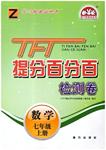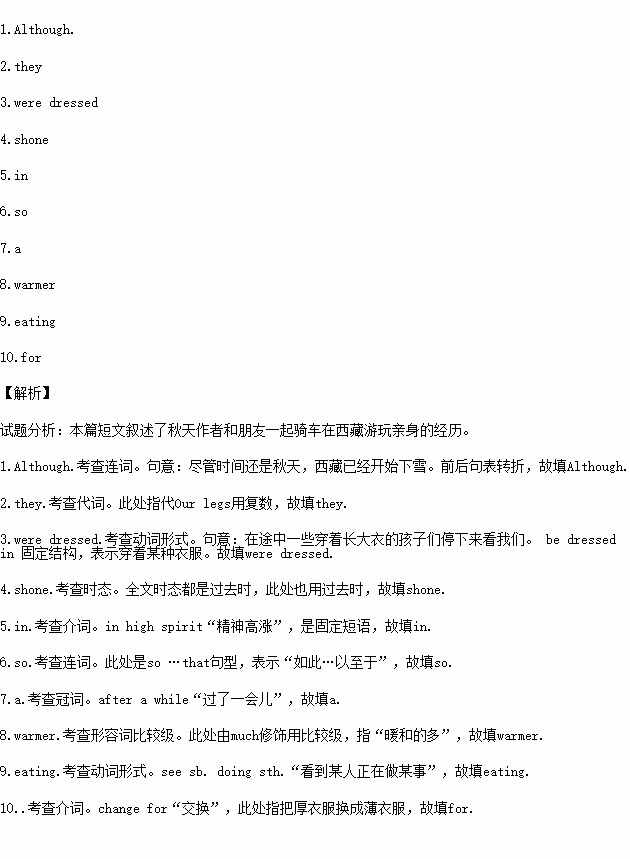题目内容
1.________it was autumn, the snow was already beginning to fall in Tibet. Our legs were so heavy and cold that 2. _______felt like big blocks of ice. Have you ever seen snowmen ride bicycles? That’s what we looked like! Along the way children who 3.______ (dress) in long wool coats stopped to look at us. In the late afternoon we found it was so cold that our water bottles froze. However, the lakes4._____ (shine) like glass in the setting sun and looked wonderful. Wang Wei rode in front of me as usual. She was 5._____ high spirit and I knew I didn’t need to encourage her. To climb the mountains was hard work but as we looked around us, we were surprised by the view. We seemed to be able to see for miles, and we were 6.______ high that we found ourselves cycling through clouds. After 7._______ while, we began going down the mountains. It was great fun especially as it slowly became much 8. _______(warm). At the foot of the mountains, colorful butterflies flew around us and we saw many sheep 9.______(eat) green grass. Then we had to change our caps, gloves and trousers 10. ______ T-shirts and shorts.
 提分百分百检测卷系列答案
提分百分百检测卷系列答案
